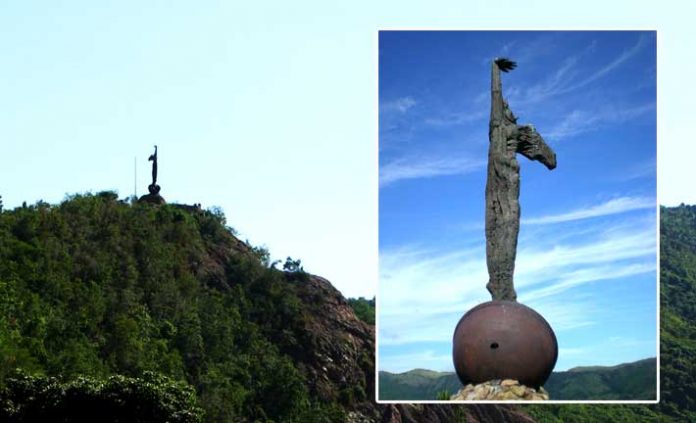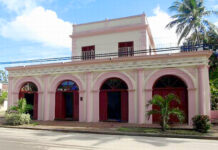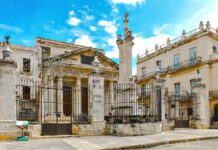Contents
General information on the Monument to the Cimarron
El Cobre is a village located about 22 kilometers from the Santiago de Cuba City, which is a place of vital importance to the religiosity of the island since it houses two worship centers of great value to practitioners of the Catholic faith and Yoruba African origin.
To the delight of Rome in this town it is located the Shrine to the Virgin of El Cobre Charity, Cuba’s Patron Saint.
This temple is the most visited among those of this kind in the country and it receives each year tens of thousands of faithful and curious.
It is similar for the descendants of blacks brought from Africa, since is of great significance because around it the so-called “Slave Route” is extended.
The Cimarron Memorial is part of the “Slave Route” project of UNESCO which aims to raise awareness of the causes and consequences of the phenomenon of slavery in the Caribbean Island. Usually, the Cimarron word was used in the Americas during the colonial era to refer to slaves who chose to escape the severe exploitation to which they were subjected.
The Monument to the Cimarron and its Peculiarities
The Cimarron Memorial is not just a tribute, but is a true masterpiece of colossal dimensions and whose authorship corresponds to the outstanding artist Alberto Lescay, an acclaimed Cuban visual arts that enjoys international recognition for the unique characteristics of his job.
Stunning to look at, you can see from far away, Lescay work is a piece of almost ten meters high, cast in bronze and other recycled metals.
It was installed on top of the promontory in 1997, to where you can access climbing more than 300 steps up.
The piece cannot be pigeonholed in only one style; it is simply a work of Lescay.
Especially in its catalog beyond the symbolic value that protects the faithful of the African origin religions.
The figure is a symbiosis of elements of such beliefs and generally represents a slave freed by his own will, by its own force, with hand outstretched toward the sky.
For connoisseurs, the monument is seen as a point of reflection on the scale and value that at all times has the resistance and rebellion against the actions of oppression and injustice.
La Fiesta del Fuego and the Monument to the Runaway
In early July, coinciding with the “Fiesta del Fuego” (Fire Feast), practitioners of Afro-Cuban religions celebrate several ceremonies and magical-religious rites at the Monument to the Cimarron, to thus pay tribute to their ancestors.
The place is really an attraction since to the ceremony “Tribute to the Cimarron” attend hundreds of tourists motivated by the particular characteristics of these scenes, which passed from generation to generation still retain their original songs, sung in the languages they spoke those first Africans torn from their original tribes and brought up so far.
The Monument to the Cimarron is, without doubt, a great work of art and becomes a symbol to acknowledge the pain of the slaves, forming a well thought set along with other elements that conform the “Slave Route”.








